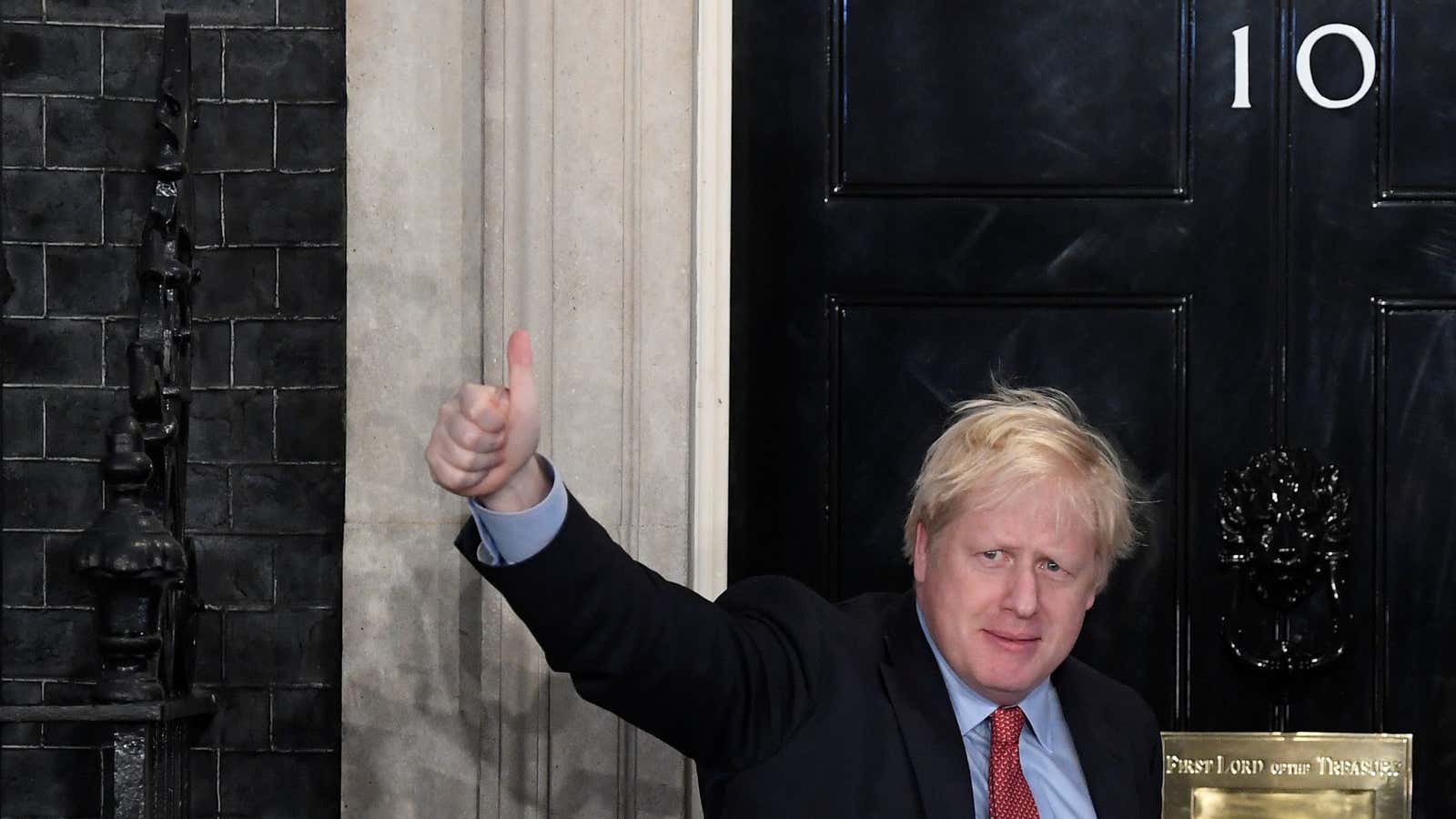Prime minister Boris Johnson’s Conservative Party won a decisive victory in yesterday’s general election, with 364 seats and one constituency left to declare as of midday Friday. It’s the party’s biggest victory since 1987.
The result, while better than expected for the Tories, are not a surprise. Polls had been predicting a small-to-comfortable majority for the Conservatives for months—although polls have been very wrong before. But while the signs were all there, on voting day, there was at least one place where a Conservative majority seemed all-but-impossible: Twitter.
On Dec. 12, the social media platform was inundated with tweets from Labour Party supporters and activists posting photos of long queues at polling stations in marginal constituencies, along with hashtags such as #KickBorisOut and #VoteTheToriesOut. Anyone looking for clues on likely election outcomes simply by looking at the Twitter feed for the hashtag #GE2019 would have been forgiven for thinking that the Labour Party was about to win by a landslide.
But here’s the thing: Twitter is not representative of the UK population, or even of the likely voter population.
Twitter is most popular among adults under 50—especially those between 18 and 29—and those with a college degree. But older voters are more likely to vote Conservative and younger voters are more likely to vote Labour. The tipping point, meaning the age at which the average voter is more likely to vote Conservative than Labour, is 40 years old. Also, older people in the UK are less likely to have university degrees, and those with lower levels of education tend to prefer the Conservative and Brexit parties, while the most popular parties for voters with high levels of education are Labour and the Liberal Democrats.
“There aren’t many people on Twitter who are over 75,” says Christopher Hanretty, professor of politics at Royal Holloway University of London. “But there are lots of voters over 75, and they turn out at…much higher rates than 18 to 25 year olds.”
While a growing number of political scientists and pollsters have tried to use Twitter (pdf) for election forecasting in recent years, there is little evidence that this model works better than nationally representative, weighted polls, which account for the over- or under-representation of certain groups, including less-educated voters.
“Some people say that you can search for the relative ratio of mentions of Labour, Conservative, Liberal Democrats…and that you can predict on that basis,” explains Hanretty. “But I think academic literature on that is really problematic, because I’m guessing that, for every paper that’s been published showing how you can predict elections with social media data, there have been ten papers that have been started and never got anywhere just because they showed crazy results.”
When Quartz asked Hanretty, just hours before the election results were announced, what people should be reading into the apparent groundswell of support for Labour on social media, he answered: “Nothing.” Today’s results appear to prove him right.
